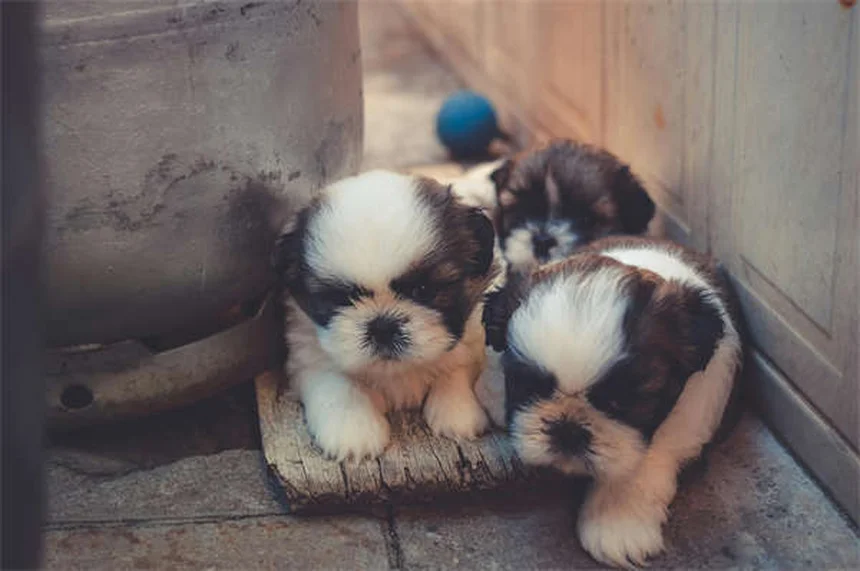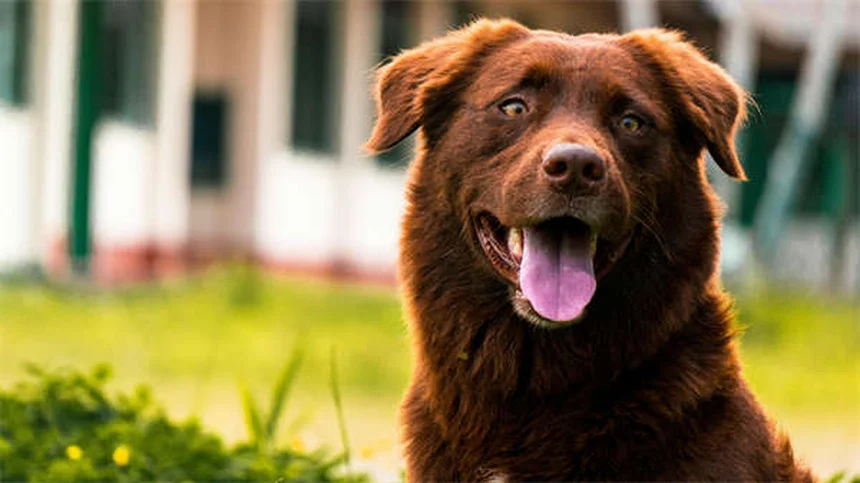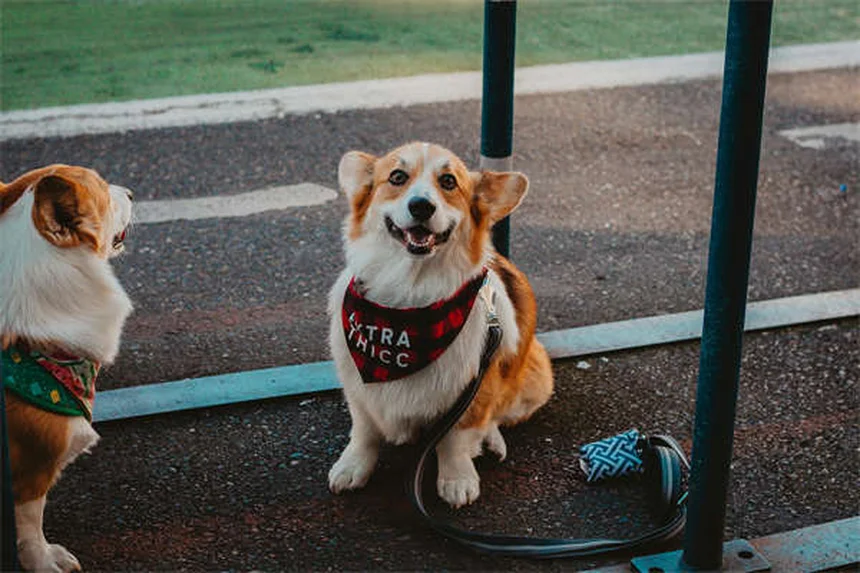Puppy Training 101: 5 Essential Steps for a Well-Behaved Dog
Wondering how to train your new puppy? The answer is: Start training the moment you bring your puppy home - yes, even at 8 weeks old! I've trained dozens of puppies over the years, and let me tell you, those first few months are golden for shaping good behavior. Here's the deal: Puppies learn fastest between 6-16 weeks, but don't stress if yours is older. With positive reinforcement, consistency, and patience (lots of patience!), you can teach any pup basic commands like sit, stay, and come. In this guide, I'll walk you through exactly what worked for me and countless other puppy parents - from potty training to leash manners. Trust me, putting in the work now means you'll have a well-behaved best friend for life!
E.g. :Safe Flea Treatments for Kittens: What Really Works
- 1、Getting Started with Your New Puppy
- 2、The Golden Rules of Puppy Training
- 3、Essential Training Areas
- 4、Building Basic Skills
- 5、Socialization - The Secret Sauce
- 6、Common Questions Answered
- 7、Beyond the Basics: Advanced Puppy Training Concepts
- 8、Nutrition's Role in Training Success
- 9、Training Through Developmental Stages
- 10、Creative Training Solutions
- 11、Building a Training Support System
- 12、Making Training a Lifestyle
- 13、FAQs
Getting Started with Your New Puppy
The Perfect Time to Begin Training
Guess what? Your puppy starts learning the moment those tiny paws enter your home, usually around 8 weeks old. I know they look like little fluffballs who only want to play, but trust me - their brains are like sponges at this age!
Here's a fun fact: Did you know puppies learn fastest between 6-16 weeks? That's when their brains are developing at lightning speed. We're talking prime time for teaching basic commands like "sit," "stay," and "come." But don't worry if your pup is older - dogs keep learning throughout their lives, just like we do!
Setting Up for Success
Before we dive into training techniques, let's talk about creating the right environment. Consistency is your new best friend - use the same words and hand signals every time. And remember, short sessions work best! Puppies have attention spans shorter than a TikTok video (about 5 minutes max).
Here's my personal tip: Always end on a high note. If your pup nails that "sit" command, shower them with praise and call it a day. They'll be begging for more training tomorrow!
The Golden Rules of Puppy Training
 Photos provided by pixabay
Photos provided by pixabay
Positive Reinforcement - The Only Way to Go
Let me ask you something: Would you work harder for a paycheck or to avoid getting fired? Exactly! That's why positive reinforcement is the only scientifically proven method that works. We're talking treats, toys, and tons of praise - not shock collars or harsh corrections.
Now, finding what motivates your pup is half the fun. Some go crazy for kibble (cheap date!), while others need gourmet treats. My neighbor's golden retriever? He'd sell his soul for a game of tug-of-war after obeying commands!
Making Training Stick
Here's where many new puppy parents slip up: only practicing at home. Imagine trying to do algebra at a rock concert - that's what we're asking when we expect perfect behavior in new places. Gradually introduce distractions:
| Environment | Difficulty Level | Tips |
|---|---|---|
| Your living room | ★☆☆☆☆ | Start here with basic commands |
| Backyard | ★★☆☆☆ | Add mild distractions like birds |
| Quiet park | ★★★☆☆ | Practice with occasional passersby |
| Busy sidewalk | ★★★★☆ | High-value treats essential |
Essential Training Areas
Potty Training 101
Let's tackle the messiest (but most important) first! Between 8-12 weeks is prime potty training time. Here's my foolproof method: Take your pup out same spot, same time every day. Stand like a statue for 5 minutes - boring but effective!
Pro tip: Celebrate like they just won the puppy Olympics when they go outside. I'm talking treats, happy dances, the works! My cousin's lab now does a victory lap around the yard after pottying - hilarious but effective!
 Photos provided by pixabay
Photos provided by pixabay
Positive Reinforcement - The Only Way to Go
Ever wonder why dogs love dens? It's their safe space! A properly introduced crate becomes your pup's personal bedroom. Start by making it cozy with blankets and toys. Then:
1. Let them explore freely with the door open
2. Feed meals near (then inside) the crate
3. Gradually increase closed-door time
Remember: Never use the crate as punishment. We want it to feel like a five-star hotel, not puppy jail!
Building Basic Skills
Mastering the Big Three
"Sit," "stay," and "come" aren't just party tricks - they're lifesavers. Here's how I teach "sit": Hold a treat near their nose, then slowly move it up and back. Their butt will naturally plop down! Instant treat and praise.
Now here's a question: Why do most trainers teach "watch me" first? Because eye contact means focus! Try saying your pup's name, then rewarding when they look at you. Soon they'll be hanging on your every word!
Leash Manners Matter
Picture this: You're being dragged down the street by a 10-pound fluffball. Not cute, right? Start leash training indoors where it's calm. Walk a few steps, stop, and reward when they pause with you.
My secret weapon? A treat pouch on my hip. Every time my pup glances up at me during walks - jackpot! Now she walks like a perfect lady (most days).
Socialization - The Secret Sauce
 Photos provided by pixabay
Photos provided by pixabay
Positive Reinforcement - The Only Way to Go
Socialization isn't just about other dogs. We're talking:
- Different people (hats, beards, sunglasses!)
- Various surfaces (grass, tile, gravel)
- Strange noises (vacuum, doorbell, fireworks recordings)
Start slow and keep it positive. My friend's pup was terrified of skateboards - so we started by just looking at one from afar, then closer each day. Now he couldn't care less!
Continuing Education
Think training ends after puppyhood? Think again! Adult dogs need mental exercise too. Try:
- Food puzzles (dinner becomes a game!)
- New tricks (shake, roll over, play dead)
- Advanced commands ("leave it" is a lifesaver)
Remember, every dog learns at their own pace. My first golden retriever mastered "stay" in days; my current goofball took weeks. Both turned out amazing - just different!
Common Questions Answered
Timeline Expectations
How long until my puppy is perfectly trained? Trick question! Training never really ends. Most pups grasp basics by 5-6 months, but keep reinforcing throughout their lives.
Class Considerations
Puppy kindergarten? Absolutely! Most start accepting pups at 12-16 weeks after certain vaccines. Look for positive reinforcement-based classes - the ones where tails wag constantly!
Final thought: Training should be fun for both of you. If you're frustrated, take a break. Come back when you're both ready to try again with fresh eyes (and maybe better treats!). Happy training!
Beyond the Basics: Advanced Puppy Training Concepts
The Power of Capturing Good Behavior
You know those moments when your puppy does something right without being asked? That's gold! Capturing spontaneous good behavior is like finding free money in your couch cushions. When you see your pup sitting calmly or lying down on their own, immediately say "yes!" and reward them.
Here's why this works so well: It teaches your puppy to think for themselves rather than waiting for commands. My sister's border collie started offering polite behaviors constantly after she began capturing them - now he practically runs his own training sessions!
Understanding Canine Body Language
Did you know your puppy is talking to you all the time? Not with barks, but with their whole body. A wagging tail doesn't always mean happiness - the speed and position tell the real story. When training, watch for:
- Loose, wiggly body: They're engaged and happy
- Yawning or lip licking: Might be stressed
- Pinned back ears: Could mean uncertainty
Learning this silent language helps you adjust training in real-time. I once thought my puppy was being stubborn during recall practice - turns out he was actually scared of a garden statue I hadn't noticed!
Nutrition's Role in Training Success
Timing Meals for Maximum Motivation
Here's a game-changer: Use part of your puppy's daily kibble allowance as training treats. Not only does this prevent overfeeding, but it also makes meal times more engaging. I divide my pup's breakfast into three portions for morning training sessions - he works harder knowing breakfast is on the line!
Pro tip: Reserve the really special treats (like chicken or cheese) for challenging situations. That way, when you need their absolute best behavior at the vet or groomer, you've got the good stuff ready to go.
The Gut-Brain Connection
Ever heard the phrase "you are what you eat"? That goes double for puppies! Recent studies show that a healthy gut microbiome can actually improve learning ability in dogs. Consider:
| Food Component | Brain Benefit | Found In |
|---|---|---|
| Omega-3 Fatty Acids | Supports cognitive development | Fish, flaxseed |
| Probiotics | Promotes healthy gut bacteria | Yogurt, kefir |
| Antioxidants | Protects developing brain cells | Blueberries, sweet potatoes |
Training Through Developmental Stages
Surviving the Teenage Phase
Just when you think you've got this puppy thing figured out - bam! Your sweet baby hits adolescence (around 6-18 months). Suddenly, they're forgetting commands they've known for months. Sound familiar?
This is completely normal! Their brains are reorganizing, kind of like when your computer updates and temporarily forgets some settings. The solution? Stay consistent with training and have patience. My neighbor almost gave up on her "rebellious" labrador - then at 18 months he magically returned to being the perfect gentleman!
Preparing for Fear Periods
Did you know puppies go through developmental phases where they're extra sensitive to new experiences? These fear periods typically happen around 8-11 weeks and 6-14 months. During these times:
- Go extra slow with new introductions
- Keep experiences positive but don't force interactions
- Watch for signs of stress and be ready to retreat
I learned this the hard way when I took my puppy to a busy farmers market during a fear period - we spent the whole time sitting quietly at the edge, just watching from a distance. But that careful approach paid off later!
Creative Training Solutions
Turning Chores into Training Opportunities
Who says training has to be formal sessions? I incorporate learning into everyday activities. When I'm folding laundry, I'll ask for a "sit" before tossing a sock for fetching. Making coffee? Perfect time to practice "stay" while the machine brews.
This approach has two huge benefits: It fits training into my busy schedule, and it teaches my pup to focus amid real-life distractions. My record? Getting through an entire phone call while my puppy held a "down-stay" - now that's multitasking!
DIY Training Tools You Already Own
You don't need fancy equipment to train effectively. Some of my best training tools came from around the house:
- Muffin tin: Hide treats under tennis balls in the cups for a fun puzzle
- Hula hoop: Great for teaching "through" and building confidence
- Broomstick: Lay it on the ground for precision heeling practice
My all-time favorite? An old plastic laundry basket turned into an "enter your crate" target. Total cost? Zero dollars. The look on my pup's face when he figured it out? Priceless!
Building a Training Support System
Finding Your Puppy Training Tribe
Training doesn't have to be a solo mission! I've found incredible support through:
- Local puppy playgroups (check pet stores or community centers)
- Breed-specific Facebook groups (great for tailored advice)
- Training club workshops (often affordable and super helpful)
Having people to celebrate victories with makes all the difference. When my pup finally nailed "leave it" after weeks of practice, my training buddies cheered louder than I did!
When to Call in the Pros
Here's something important to remember: There's no shame in seeking professional help. If you're struggling with:
- Excessive nipping or biting
- Severe fear or anxiety
- Aggression toward people or other animals
A certified trainer can be a game-changer. I waited too long to get help for my puppy's leash reactivity - working with a pro saved us months of frustration. Best investment ever!
Making Training a Lifestyle
The 5-Minute Training Habit
Consistency beats intensity when it comes to dog training. I aim for five 2-minute sessions throughout the day rather than one long session. This keeps my pup engaged and prevents both of us from getting frustrated.
Think about it: That's less time than you spend scrolling through your phone waiting for coffee to brew! I keep treat pouches in every room so I'm always ready for an impromptu training moment.
Tracking Progress (Without Going Crazy)
You know what's more satisfying than crossing items off a to-do list? Seeing your puppy's progress! I use a simple notebook to jot down:
- New skills attempted
- Breakthrough moments
- Funny training bloopers
Looking back after a few months is incredibly rewarding. That "impossible" trick that took weeks to learn? Now it's second nature. Proof that small, consistent efforts really do add up!
E.g. :The First 7 Things You NEED To Teach Your Puppy - YouTube
FAQs
Q: How long does it take to train a puppy?
A: Here's the truth - puppy training never really ends, but you'll see major progress in the first 5-6 months. I always tell my clients to think of it like raising a kid: You teach the basics early, but keep reinforcing good behavior throughout their life.
The key is short, daily sessions (about 5 minutes each) using positive reinforcement. My golden retriever Max mastered "sit" in 3 days but took 3 weeks to nail "stay." Every pup learns at their own pace!
Remember, training isn't just about commands - it's about building trust and communication. Even my 10-year-old lab still gets "refresher courses" to keep her sharp!
Q: What's the best method for puppy training?
A: Hands down, positive reinforcement is the only scientifically proven method that works long-term. Here's how I do it: When my puppy does something right (like sitting when asked), I immediately reward with treats, praise, or playtime.
I've seen too many people use harsh methods like shock collars - trust me, those just create fearful dogs. Instead, find what motivates your pup. For some it's chicken bits, others go crazy for belly rubs!
Pro tip: Keep a treat pouch handy during training sessions. Consistency is everything - reward good behavior every single time at first, then gradually space out the treats.
Q: When should I start socializing my puppy?
A: Start socialization immediately, but do it safely! Before vaccinations are complete (around 16 weeks), focus on:
- Meeting vaccinated dogs you know
- Experiencing different surfaces (grass, tile, etc.)
- Hearing new sounds (recordings work great!)
- Being handled (touch paws, ears, mouth daily)
I made the mistake with my first pup of waiting too long - big regret! Now I introduce my puppies to 100+ new experiences by 12 weeks. Just avoid dog parks and unknown dogs until vaccines are done.
Q: How do I stop my puppy from biting?
A: Ah, the infamous puppy teeth phase! Here's what worked for me: When those needle teeth connect with skin, say "Ouch!" loudly (like another puppy would yelp), then immediately stop playing.
I also kept chew toys everywhere - redirecting to appropriate items is key. My current pup loved frozen washcloths when teething!
Remember, biting is normal puppy behavior that usually fades by 6 months. Stay consistent with your response, and those sharp little teeth will eventually disappear!
Q: What's the first command I should teach my puppy?
A: While "sit" is the classic first command, I always start with "watch me" (eye contact). Here's why: If your pup isn't looking at you, they're not listening!
I teach it by saying their name, then treating when they make eye contact. Soon they'll be checking in constantly - which makes all other training easier.
Second priority? Their name recognition. I practice this by saying their name randomly throughout the day and rewarding when they look. These two skills form the foundation for everything else!







